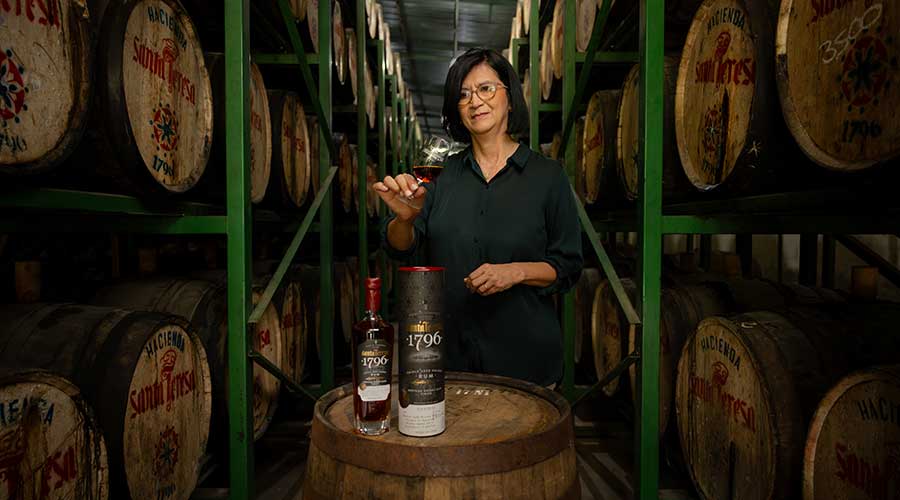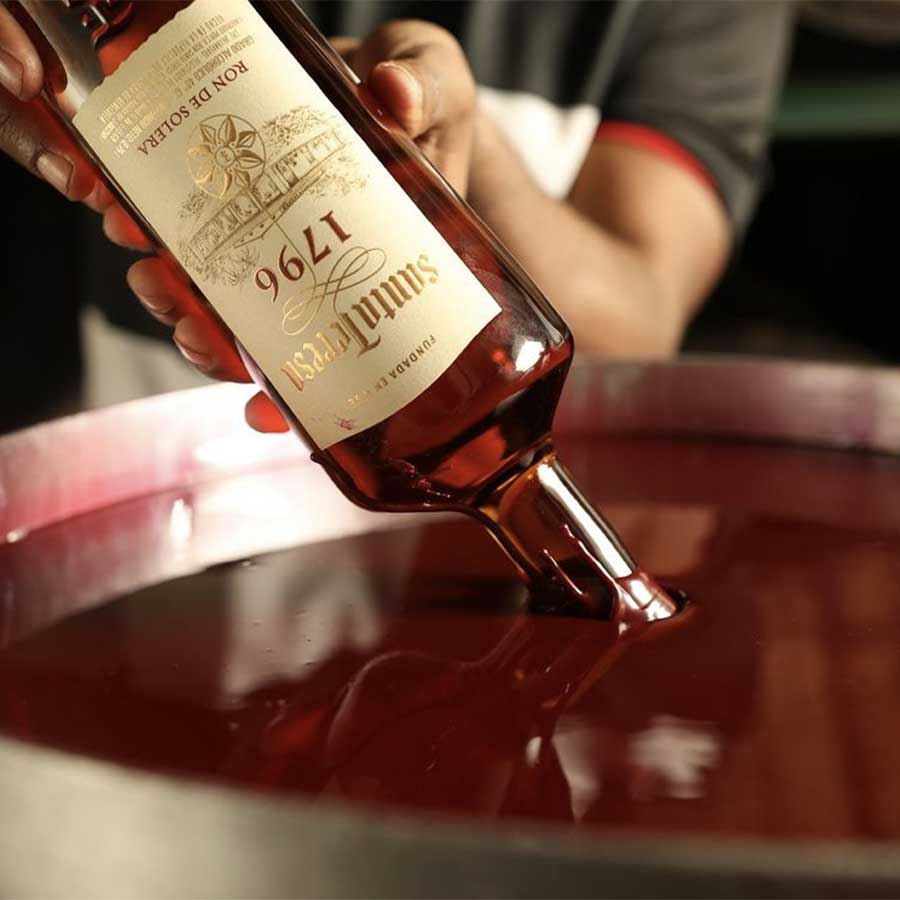By Fabien Humbert with Matthieu Lange
Venezuela’s largest rum producer, which has also remained a family business for five generations, is looking to make its mark in France. Not least thanks to limited editions of its iconic 1796 vintage. We take a closer look at this distillery, which is set to make a name for itself in the high-end segment over the next few years, and at its various programmes aimed at making life better in its homeland.

The Santa Teresa distillery is located in the Aragua valley (in the state of the same name). This is where Hacienda Santa Teresa was founded in 1796, when Venezuela was still under Spanish rule (since the 16th century).
Cocoa and coffee were probably grown here, as in the rest of the country, but sugar cane was also cultivated from the outset. Shortly after the War of Independence in 1826, a young German merchant, Gustav Julius Vollmer, arrived in Venezuela, met a revolutionary woman named Panchita Rivas and married her in 1830.
They settled on the Hacienda and founded a dynasty that still rules Santa Teresa. In 1885, one of his sons, Gustavo, bought the estate from a cousin and began distilling rum. At first, rum was marketed locally.
It wasn’t until 1909, when Venezuela introduced a company register, that the Santa Teresa brand was registered. For the record, it was the third company to be registered in the country. Today, Alberto Vollmer, a worthy representative of the fifth generation, is at the head of this family-run business, which is the country’s leading rum producer.

However, Santa Teresa has signed a worldwide distribution agreement with the giant Bacardi. “It’s a commercial and distribution collaboration to achieve international expansion”, explains Benjamin Nolf, Santa Teresa’s brand ambassador.
A single estate rum
Santa Teresa is a single estate rum, which means that all the raw materials used to make its rums come from the Hacienda estate. “All stages of production, from harvesting to bottling, are carried out in the Aragua Valley”, explains Benjamin Nolf.
The valley is protected from the tropical climate of the Caribbean Sea by imposing mountains. The climate is relatively constant throughout the year, with fairly hot, humid days and cool, dry nights. “We call it the valley where it’s spring every day,” says Benjamin Nolf. Hacienda Santa Teresa has 300 hectares of sugar cane, most of which is planted with varieties developed locally in Venezuela.

But the distillery can also rely on the sugar cane spread around hacienda Santa Teresa and other haciendas belonging to other family members. This same territory has been divided into several haciendas over the course of history.
In total, there are around 5,000 hectares of sugar cane in the Aragua Valley, yielding around 350,000 tonnes a year. Most of the cane is harvested by machine, but in some areas it is still cut by hand. The harvesting season generally runs from December-January to late March or early April.
Once cut, the cane is immediately sent to the refinery, which is not owned by Santa Teresa as a brand, but by one of the members of the Vollmer family, located 20 km from the hacienda. The sugar is then sold in the country, while the molasses is sent back to the hacienda where it is fermented.
The Santa Teresa rum production process is unique in that it uses two types of fermentation. Continuous fermentation, which lasts 7 days a week, 24 days a day, with occasional stops to clean the vats. At the same time, batch fermentation lasts up to 4 weeks (without intervention).
“Such long fermentations are rare in this part of the world, and even unique in Venezuela,” explains Benjamin Nolf. The molasses wine from the batch fermentation will then be distilled in still jars with a capacity of 3,000 litres, while the molasses wine from the continuous fermentation will be distilled in columns.
The distillery has four columns, enabling it to obtain a much more refined and neutral alcohol. What’s more, we can obtain alcohols with different sensory characteristics: the first column produces a heavy alcohol, the fourth a light alcohol. This allows us to obtain different types of rum for our blends during the aging process.

Cuvée 1796
Santa Teresa’s flagship cuvée is 1796 (the date the hacienda was founded, if you’ve been keeping track). And it boasts a particularly complex production process. Distillation produces three different types of rum. The first is a relatively heavy rum, 75% proof, which comes out of the first column.
Next, a light rum, containing only a few aromatic compounds and 93-95% proof, comes out of the fourth column. Finally comes the third type of distillate, which comes from pot still distillation and has a strength of around 83%.

Cuvée 1796 is DOC from Venezuela, which means that it must follow strict rules, the main ones being that all the raw materials must come from the country, all the production must take place there, and the rums must have aged for at least 2 years in Venezuela.
Aging
For the 1796 collection, each type of rum is placed in ex-bourbon casks after a 60% to 65% reduction. There, they age for between 4 and 35 years. Nancy Duarte, our master blender, will select between 5 and 10 eaux-de-vie for each type of rum (heavy pot still, heavy column and light column) and blend them together,” explains Benjamin Nolf. So in 1796 there are up to 30 rums that have aged between 4 and 35 years”.

This blend is then blended with the traditional solera, which allows us to smooth out the slight differences between batches and years over time. The lowest level of the solera contains juice from the original 1796 cask (the Santa Teresa 1796 was launched in 1996, but the Solera was built in 1992), which has never been emptied.
In terms of European age, the youngest rum in the blend is a four-year-old, but it also contains much older rums. After the aging process, 1796 rums are bottled on the estate and sealed with wax by hand.
Limited series for the French market
Keen to conquer new premium markets, Alberto Vollmer and Nancy Duarte have just launched their Santa Teresa 1796 Speyside Whisky Cask Finish, based on cuvée 1796, but with a 13-month finish. This is long and rare for a finish, especially in an exotic climate like Venezuela,” says Benjamin Nolf.

For this first limited edition, the unpeated Scottish casks used come exclusively from distilleries in the Speyside region. The casks are bought from a cooperative, which itself buys the casks. Another major innovation is the increase in alcohol content from 40% to 46%. “This product has really been designed to appeal to whisky lovers,” says Benjamin Nolf.
It’s a real innovation in Venezuelan rum, while remaining true to the history of Santa Teresa. So we’re going to be keeping a close eye on what the Santa Teresa distillery has in store for us in the future, as these new ways of showcasing Cuvée 1796 come to the fore. Especially as new limited editions will be arriving on the market in the coming years. So we’ll have to be patient, and of course keep an eye out for Rumporter releases.
